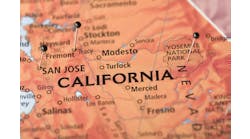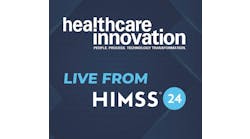The eHealth Exchange, one of the nation’s largest health information networks connecting federal agencies and providers, announced the first go-live of COVID-19 electronic case reporting (eCR) with the Association of Public Health Laboratories (APHL) and OCHIN, a non-profit health IT innovation organization.
Via these latest efforts, the eHealth Exchange network—inclusive of 75 percent of U.S. hospitals—now enables automated generation and transmission of case reports from electronic health records (EHR) to the necessary public health agencies, increasing accuracy while reducing reporting burdens of providers, officials said in an Aug. 17 announcement.
Leaders of the eHealth Exchange point out that while new data reporting protocols from the White House have redirected reporting of some situational awareness data from the Centers for Disease Control and Prevention (CDC) to Health and Human Services (HHS), these situational awareness data are different from electronic case reporting data which still must flow to state and local public health agencies. Case reporting to state and local public health agencies is required by law in every state and territory. The states do use some of these case data that they receive, in anonymized form and a separate process, to send data to the CDC as well.
In a recent feature story from Senior Editor David Raths on public health data reporting during the pandemic, he referenced an analysis of health system executive survey responses published in JAMIA (the Journal of the American Medical Informatics Association) in May, revealing that 41 percent of respondents said the largest barrier to electronic lab reporting and syndromic surveillance was that public health agencies lacked the capacity to electronically receive data. The study concluded that “digitizing hospital records without a concomitant investment in the IT capabilities of state and local public health agencies contributed to our reliance on a patchwork system of fax, e-mail, and paper to track the spread of COVID-19.”
However, efforts in this area are improving. Raths further detailed in that story how the start of COVID-19, there were few implementations of electronic case reporting. More than 2,000 sites have implemented eCR in just a few months.
“The new electronic case reporting allows network participants to automatically report relevant health information to public health agencies via the eHealth Exchange,” Jay Nakashima, executive director of eHealth Exchange, said in a statement. “We’ve been working hard with APHL to bring this to life and hope it eases the process for providers and health information networks reporting COVID-19 data and other reportable conditions to their local, state, and federal agencies.”
OCHIN has become the first eHealth Exchange network participant to enable case reporting across 20 states in its network. According to officials, OCHIN recognized the value of leveraging the eHealth Exchange to support electronic case reporting requirements for communities disproportionately impacted by COVID-19 and saw great potential for population health through other disease notifications using this public health reporting.
“The eHealth Exchange provided OCHIN a single API to securely channel disease notifications to local and state public health authorities all across the U.S.,” said Paul Matthews, chief technology officer and chief information security officer of OCHIN. “So instead of building and maintaining these separate connections with countless public health authorities across the country, this allowed us to create efficiency in the reporting system and reduced the burden on providers in our network.”
In addition to providing this service to its own network participants, the eHealth Exchange is providing this service at no cost to all Carequality-enabled networks so they can contribute to the advancement of public health reporting, officials noted. This new capability to automatically generate and send case reports initially supports the reporting needs of the national COVID-19 pandemic response and will expand to support the more than 50 reportable diseases that APHL monitors, they added.
“The eHealth Exchange has paved the way for seamless electronic case reporting via the Association of Public Health Laboratories AIMS platform,” said John Loonsk, the chief medical informatics officer of APHL. “The policy and technical underpinnings of the eHealth Exchange allow healthcare organizations to provide critical clinical data to public health while practically reducing their reporting burden.”


